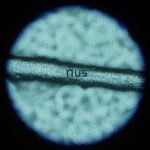Scientists find way to recycle carbon and glass fiber composites waste
Researchers at the University of Sydney have developed an innovative recycling method to address the growing problem of carbon and glass fiber composite waste.
These...
This revolutionary glass could reduce carbon footprint and defy cracks
Researchers at Penn State University have developed an innovative glass called LionGlass, which holds the promise of revolutionizing glass manufacturing.
This breakthrough material not only...
Scientists find way to turn high-frequency signals into visible light
Researchers have made a remarkable breakthrough in the field of information and communication technologies.
Their recent study, published in Nano Letters, reveals the potential of...
How this device could change the world
The Haber-Bosch process is like a super important recipe that helped feed the world!
Two smart guys, Fritz Haber, and Carl Bosch, came up with...
Scientists find cool uses for hair waste
Have you ever wondered what happens to all the hair that ends up in your hairbrush? It seems like not much, right?
Well, researchers at...
Scientists find new way to make permanent magnets
Science can sometimes feel like magic, and that's certainly the case with the latest breakthrough from the Critical Materials Institute, which is under the...
How nanomaterials help smart windows control solar heat in buildings
Have you ever wished your windows could adapt to the weather and keep your room cooler when it's scorching hot outside?
New soft materials could give robots muscles
You know how cool the robots are in science fiction movies, right?
Now imagine if they could have muscles just like humans.
A group of researchers...
New super-thin material could help your wearable electronic devices chill out
Wearable electronic devices that stick to our skin, like high-tech band-aids, have become the latest craze.
They can monitor our health, help us communicate wirelessly,...
New device could capture carbon dioxide at the flick of a switch
Exciting news has come from Rice University where engineers have developed a new technology that could lower the cost of capturing carbon dioxide (CO2)...










